We all know riders who have quit riding due to crashes. The loss of health, money, and confidence figure into the equation that leads to walking away from two wheels.
I believe there is a second reason that we lose riders: Riding isn't any fun. Do you know riders who have a bike in the garage but "never find time to ride anymore"? Do you see used bikes for sale with extremely low miles? Do you know riders who took a riding class and got a motorcycle endorsement but never bought a bike? Maybe this is you or a friend?
Two-wheeled joy slips away when riders get scared during a ride. Or they can’t keep up with their friends. Or when they build a track bike and can’t get out of the bottom half of the C group. Riders begin to doubt their skills and abilities, thinking, “Maybe riding isn’t for me.”
These riders don’t crash their way out of the sport; they simply leave the bike parked in pursuit of something more enjoyable. They bought the bike to enjoy its performance but find themselves scared of the speed the engine generates. When they ride slowly to preserve their safety, riding becomes less fun than driving. Look in local classifieds: “Bike for Sale: Clean, low mileage, extra oil filters, riding gear included. Selling due to no time to ride.”
The information and processes of riding well are available to those with desire, and this column aims to build on that library. The lack of fun, in my opinion, is centered around a lack of confidence in the brakes and poor use of the eyes. This week I want to discuss the brake issues.
The fear of acceleration is based on survival. That’s smart, but we improve our chances of survival by mastering the brakes. A rider hesitant to accelerate does not need throttle practice, they need braking practice.
The message for our industry is that a bike sitting in the garage doesn’t need an oil change or new tires or brake pads, and the owner will probably not buy a second bike to sit next to it. Their riding gear never wears out and they eventually go to non-operation-status insurance. When they finally sell this bike they don’t ever replace it because riding is a lost dream.
A rider leaves the bike in the garage because:
They are under the mistaken belief that brakes should be used as little as possible. Just the opposite—as we discussed in last week's column. In other words, they don't accelerate because they don't have a plan to use the brakes. They plan to roll off the throttle, an inefficient and unadjustable way to slow your motorcycle. It works fine only if you ride slowly (not that fun) and have no midcorner emergencies.
They are afraid of the brakes because they lurch at them with their right hand or stomp on them with their right boot. This abruptness is shockingly scary, so they use the brakes as little as possible, or perhaps default to the rear brake only. I wrote a "what to practice" guide and here is the link.
They don't accelerate due to fear, but my experience has shown that proper and constant braking practice reduces this fear and adds the confidence we need to enjoy our engines. Proper practice is included in the link above and includes trailing brake pressure into the corner, called trail-braking. I defined trail-braking last week when discussing our Marine Corps Level 3 training.
They are confused by theoretical instruction they have heard that teaches them to use the front brake and the throttle at the same time. This is provably wrong, yet I heard it again last week. Just think it through yourself: We do not want to try to slow the front tire and accelerate the rear tire because weight needs to be forward for good braking, and rearward for good acceleration. Throttle is shut before braking, the brakes come off before acceleration.
Riders preparing to quit riding are often using the throttle when they should be using the brakes or at least decelerating. They have heard "power through the corner" and other similar cutesy-isms like "when in doubt, throttle out," but in fact need to focus on what their speed does to their cornering radius. Mark Schellinger and I did a Champ School video Radius Equals MPH and a few minutes in a parking lot after watching the vid will solve the question of what your bike should be doing in a corner in terms of slowing, holding speed, or accelerating. Coaches, we need to get this right or we will continue to lose riders. Hard to grow an industry when the new members lose enthusiasm. See next week's column for more thoughts on coaching motorcycle riders.
Riders are frightened off their bikes by near-misses in traffic. This is sometimes due to riding in blind spots, but more often due to cars turning in front of them in what feels like an emergency situation. If a rider is not covering their brakes in traffic, they are at least a half second away from any true slowing, and that half second of coasting closer to the encroaching vehicle often causes a panicked grab at the front-brake lever and lunge at the rear-brake pedal. Panic sucks, and those riders ask themselves, "Why not just take the car today?"
Here are two links on the subject of covering the brakes, an industry-growing technique because it eliminates many emergencies:
- And finally, new riders must realize that the bike they bought was designed by a highly experienced rider. By the time you are hired to help test motorcycles for manufacturers, you have won a lot of races and operate successfully at the edge of the performance envelope. At this edge, inputs are extremely, unbelievably smooth, linear, and progressive.
Riding a motorcycle abruptly in terms of brakes, throttle, and steering is very unenjoyable because the motorcycle was not designed to be operated that way. Riders will quit riding in the same way lion tamers who believe they should bathe in chicken broth lose interest in their jobs.
Riding joy means something different to each of us, but it almost always revolves around confidence in your ability to make the next corner or survive in traffic. Getting to breakfast with your friends is fun. Getting advanced into the A group is fun. Feeling constantly in control of your motorcycle is fun because coasting is out of control and “not fun, I’m going to quit.” All these riders having fun are using the throttle with a plan to use the brakes.
If you or someone you know has lost the joy of riding, I hope you give it one more try based on the words and links in this article. For only $150 you can come to our ChampStreet programs, including MotoSchoolooza at New Jersey Motorsports Park. Nothing would give my team more joy than to have every hesitant rider in the country show up to one of our programs. We will reignite your dream of riding, regrow the industry as your passion returns through an approach that mimics the habits and approaches of the world's best riders.
One thing’s for damn sure with the best riders you know: They will always accelerate with a plan to brake! Street safety and roadracing championships follow. Our industry grows as safety and joy grow…with brake use as outlined over the past two weeks.
Off Subject: Our instructor and friend Kyle Wyman has his own army! If you’re a fan of the 2019 Daytona 200 champion who is campaigning a Ducati in MotoAmerica Superbike this year, enlist and receive a bunch of cool swag, a pass to the KWR hospitality area, and your name on his V4R! I’ve enlisted already. KWArmy.com for more.
More next Tuesday on rider coaching!










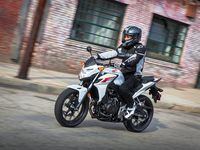
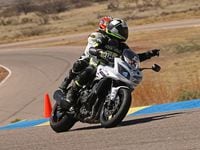
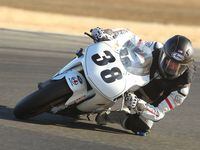
/cloudfront-us-east-1.images.arcpublishing.com/octane/X5TB7BDV4BA2RPSY54ZGK27RP4.jpg)
/cloudfront-us-east-1.images.arcpublishing.com/octane/REUHOJXRDBGZ5IHBYZCCBCISPA.jpg)
/cloudfront-us-east-1.images.arcpublishing.com/octane/52LGJTCKBFEHDF7S7H4CVUIMGM.jpg)
/cloudfront-us-east-1.images.arcpublishing.com/octane/YMWAIPIPSJAOXOU3QMJMGH37OM.jpg)


/cloudfront-us-east-1.images.arcpublishing.com/octane/EJ6KZRGAYBCVXNL2PJXL37UVWQ.jpg)
/cloudfront-us-east-1.images.arcpublishing.com/octane/AAN4TI76M5H5JMUVEIGASWXBDU.jpg)
/cloudfront-us-east-1.images.arcpublishing.com/octane/P3RXD2UCPFF37CMB7CHPVKXORY.jpg)
/cloudfront-us-east-1.images.arcpublishing.com/octane/VZEG2EJI2RDFZNHLRZMU56MD3Q.jpg)
/cloudfront-us-east-1.images.arcpublishing.com/octane/GVJQO5FFOFBWNGODOBRB4FBAW4.jpg)
/cloudfront-us-east-1.images.arcpublishing.com/octane/BIVAK2SFIBDJJM25E7I5VU2FJE.jpg)
/cloudfront-us-east-1.images.arcpublishing.com/octane/CH5VX52UG5CFHOVH5A6UYEFWWA.jpg)
/cloudfront-us-east-1.images.arcpublishing.com/octane/ZVGJNGZRU5C33N7KN23BBFKSC4.jpg)
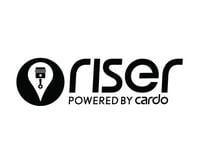
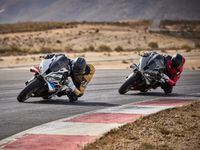
/cloudfront-us-east-1.images.arcpublishing.com/octane/CZ5OM3E43ZEXJHY7LCYXCHLIKI.jpg)
/cloudfront-us-east-1.images.arcpublishing.com/octane/DF5T4K5KPZFJXFCTGPYR77PKJM.jpg)
/cloudfront-us-east-1.images.arcpublishing.com/octane/RMCT2KVQBJHBZMRTSLOVPMOILU.jpg)
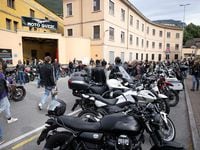
/cloudfront-us-east-1.images.arcpublishing.com/octane/K45KB2XHQVA65DX7VN4ZSMT2BI.jpg)
/cloudfront-us-east-1.images.arcpublishing.com/octane/FNHXQQ56BRD7TO4YIJ453PNG2M.jpg)
/cloudfront-us-east-1.images.arcpublishing.com/octane/OIKJC4JA3ZH7BMKUGWYKBIY5FA.jpg)
/cloudfront-us-east-1.images.arcpublishing.com/octane/MT2SAEWY6FDXFBYSLDE3AEFDTM.jpg)